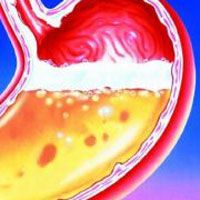Article
Helicobacter Pylori and Type 2 Diabetes Mellitus: More GI Upset with Metformin
Author(s):
China's type 2 diabetes mellitus (T2DM) epidemic continues to be a pervasive, costly health care issue, with proportions surpassed only by epidemic here in the US. The majority of T2DM treatment guidelines recommend metformin as the first-line anti-hyperglycemic agent for diabetes management due to its relative safety, tolerability, and cost-effectiveness.

China’s type 2 diabetes mellitus (T2DM) epidemic continues to be a pervasive, costly health care issue, with proportions surpassed only by epidemic here in the US. The majority of T2DM treatment guidelines recommend metformin as the first-line anti-hyperglycemic agent for diabetes management due to its relative safety, tolerability, and cost-effectiveness. Metformin’s most common side effects are gastrointestinal in nature and include diarrhea, abdominal pain, vomiting, and (rarely, though severe) lactic acidosis. Several studies suggest associations between diabetes and Helicobacter pylori infection, including an increased incidence of infection in T2DM patients.
Huang et al. evaluated the impact of H. pylori infection on metformin tolerance in T2DM Chinese patients. The four week study enrolled a total of 415 metformin-naive subjects aged 40 or older who met 2012 American Diabetes Association criteria for T2DM. All patients started with metformin doses of 500 mg/day. The researchers evaluated GI symptoms each week and increased doses to a maximum of 1500 mg/day based on individual tolerability and adherence. H. pylori infection was evaluated using the C-labeled urea breath test (C-UBT) and results were blinded to patients and researchers.
Two hundred twenty patients were H. pylori-negative and 195 were H. pylori-positive. Baseline measures of GI symptoms demonstrated no statistically significant difference between the groups. However, after 4 weeks, H. pylori-positive participants reported more nausea (20.0% vs. 9.6%), bloating (47.7% vs. 23.2%), abdominal pain (44.6% vs. 21.8%) and anorexia (32.8% vs. 12.3%) than the H. pylori-negative group.
The average metformin dose for H. pylori-positive and —negative patients was 950 mg and 1,200 mg respectively at the study’s end. H. pylori infection, female sex, increased age, and elevated BMI, triglyceride, and LDL levels were associated with increased GI symptoms.
The discrepancy between the average final doses of the H. pylori-positive and —negative groups indicates T2DM patients with H. pylori infection have decreased metformin tolerability. Due to the metformin’s immense value in T2DM management, screening for H. pylori infection in T2DM patients may be wise. This study appears electronically ahead of print in Diabetes Technology & Therapeutics.




